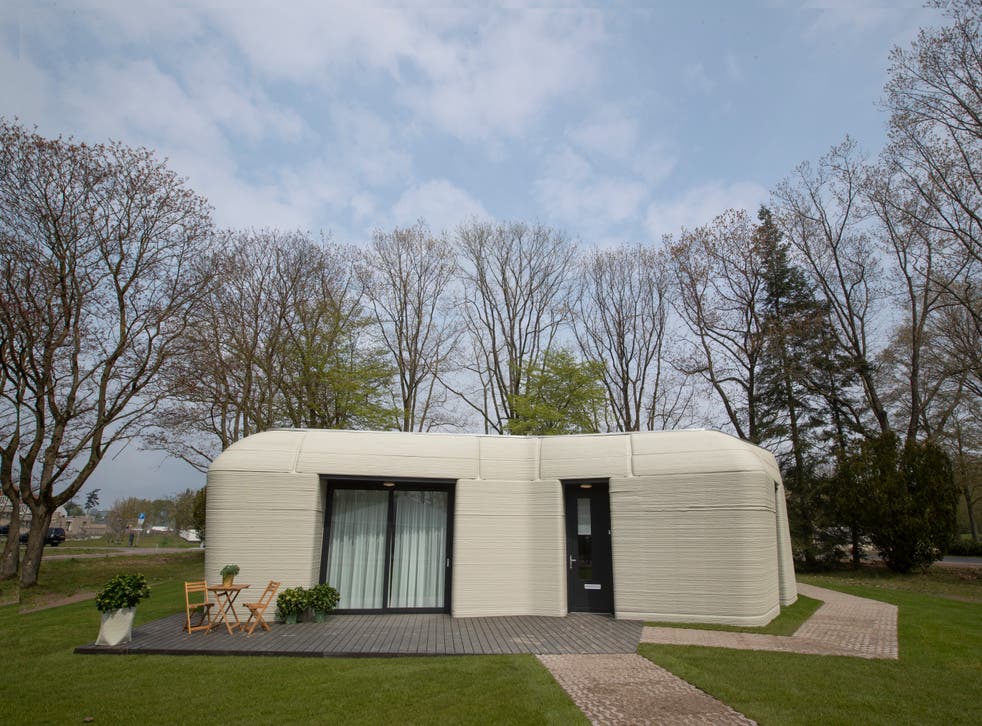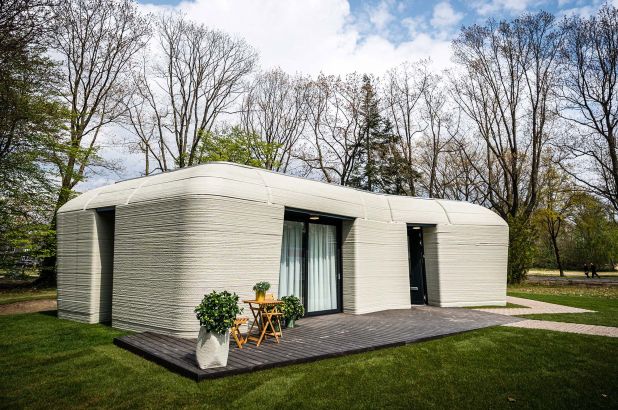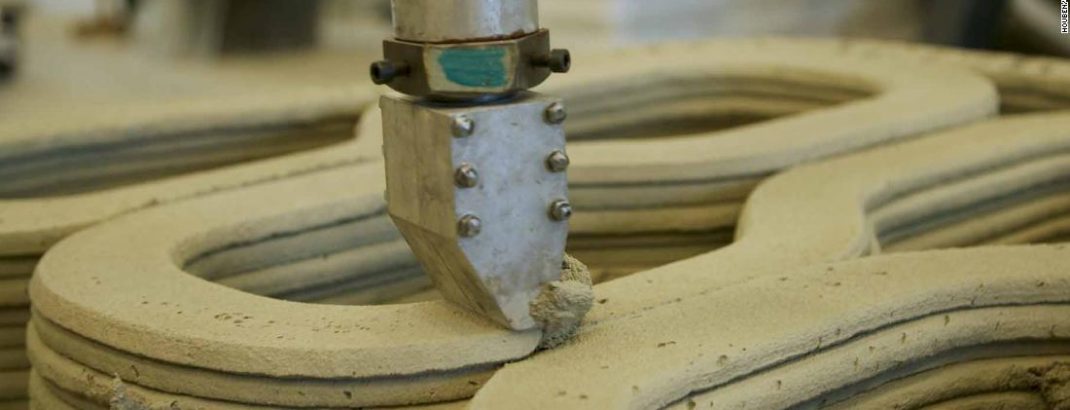Richard Minifie, Senior Additive Manufacturing Engineer at Ricoh 3D, cuts through the hype to take a realistic look at the future of 3D printing in house construction.
3D printing within the construction industry has been back amongst the headlines in recent weeks after a Dutch couple moved into what has been dubbed ‘Europe’s first fully 3D-printed house’.
The possibility of using the technology to ‘print’ houses en masse has been long-talked about. We have seen claims about the ‘first 3D printed house’ many times in recent years, and there is certainly a lot of hype to decipher around this subject. Even if the technology is used to print the walls, there is much more to house-building than that!
3D printing in housing is on the peak of Gartner’s hype cycle – the phase that 3D printing itself went through in the 1980s and 90s – with the industry still trying to find relevant applications and that elusive ‘slope of enlightenment’. Many of its uses to date have been novelty projects for the rich and entrepreneurial.

3D printing in construction, much as on compact home 3D printers, involves depositing thin layers of material over previous layers, until the form is finished. The technique used traditionally with concrete, filling moulds layer by layer, isn’t a million miles away from this in fact.
There has, however, been positive signs of innovation and progress in the last few years. We see the real value of 3D printing in construction as a solution for disaster relief, building in remote locations or to tackle population issues rather than as a replacement for standard housing. The technology is already demonstrating advantages that will come to the fore as time goes on.
For example, the first ever 3D printed school in Madagascar is set to open its doors later this year. The potential in developing countries, where there isn’t skilled labour or it’s difficult to organise a workplace, is clear.
In the USA, the desert landscape of Coachella Valley will soon be home to the first US neighbourhood of 3D printed houses for low income families. Increasingly 3D printing is evidencing that it is possible to print small structures quickly, cost effectively and in remote locations where traditional buildings simply aren’t possible.
We can also see the benefits the technology would bring for pop-up venues like sports stadiums and hospitals, which need to be erected quickly and then repurposed afterwards.
What are the advantages of 3D house printing?
The advantages of 3D printing in house building are, potentially, the same as they are in other industries where the technology is now established: speed, need, sustainability and cost.
Speed – We’ve all seen the headlines about houses built in “24 hours”. Whether or not this mighty feat is yet possible, there was a habitable house revealed in the Netherlands recently that was built within 120 hours. This is clearly a huge leap from the current six to seven-month construction period which is extremely useful in times of disaster relief.
Need – In an era of over-population and mass housing shortages, there is a clear drive for the construction industry to look to alternative means for building. Additionally, with shortages in trades, including bricklaying, slowing the construction industry the case for new methods of manufacturing is mounting.
Sustainability – It’s a huge focus for all businesses but especially for CO2-heavy construction. 3D printing uses only the material needed and, with production taking place on site, the carbon emissions from construction equipment and transport are also vastly reduced. Every centimetre of material is used, making it significantly easier to calculate how much will be needed in the first place. However, as with the example in the Netherlands last month, concrete is still a very polluting material – producing 70kg of CO2 per ton – and it remains one of the most used resources on Earth. Perhaps exploring different materials can offset the environmental impact, as with the development by California based ‘Mighty Buildings’ who are using a new composite material to 3D print homes in Oakland.
Cost advantage – 3D printed structures have much lower building costs than those built with traditional methods due to the reductions in raw material and labour. These savings can then be passed on to the customer, creating affordable housing in an age of rocketing house prices. Houses have been created using 3D printing for as little as $10,000 in some cases – or even less.

As is generally the case with 3D printing, the technology removes warehouse costs as products and stock do not have to be held in storage. There are also transport savings, with printing on site and on demand, so construction equipment and materials do not have to be moved around the country.
Material use and wastage is reduced, and 3D printing also opens up the use of alternative materials such as composites, which can often be cheaper, but just as effective, as traditionally-manufactured counterparts. Finally, 3D printing in house building slashes labour costs as far less man power is needed on site and machines are able to build 24 hours a day, without reliance on working patterns or hard labour.
Conclusion
Any established industry, manufacturing included, tends to move slowly, so lack of buy-in from major building manufacturers means that this looks unlikely to become a mainstream offering any time soon. Safety regulations are more important in the construction industry than ever so until equivalent standards are defined 3D printed houses will still remain at prototype stage – either for the very poor or the very rich – to address over-population in cities or the difficulties of building in remote locations.
We are on the cusp, though. As media interest increases, more manufacturers and architects can’t help but take notice. Like 3D printing in all industries, the technology does have its place and its value but the idea of just arriving at a building site with a 3D printer isn’t quite right. Houses will still need footings etc. We see this as a complimentary, rather than replacement, technology in mainstream construction.
